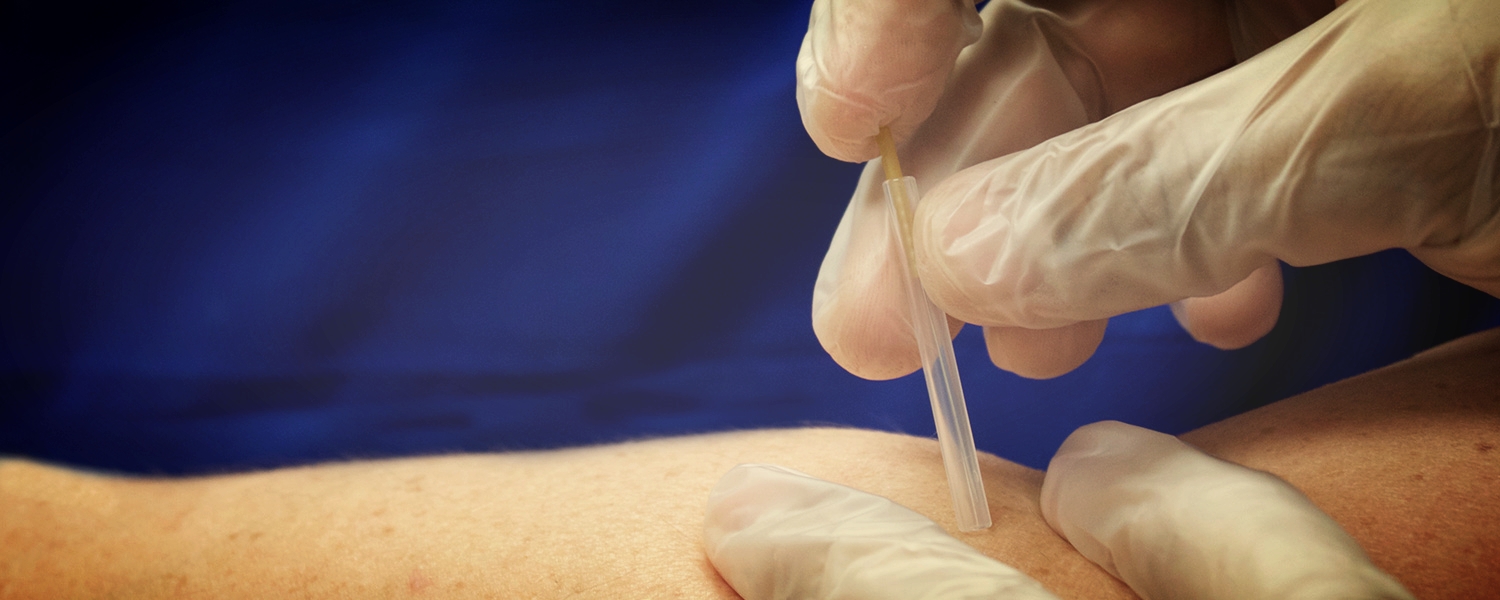INTEGRATED DRY NEEDLING
Integrated Dry Needling (IDN) is an approach for the diagnosis and treatment of myofascial pain syndromes of neuropathic origin. It is based on Western medical science and the radiculopathic model of pain.
Radiculopathic pain or neuropathic pain/neuropathy occurs when nerves in the peripheral nervous system malfunction and become supersensitive following minor irritation. These supersensitive nerves then misinterpret harmless signals from the body as exaggerated pain. This in turn results in ongoing (chronic) pain without any physical signs of permanent injury or inflammation.
The most common cause of neuropathy is spondylosis. Spondylosis is the degenerative narrowing of the space between the spinal vertebrae that occurs due to everyday wear and tear or overuse. Neuropathy causes muscles to rest in a shortened state (contracture), which will cause increased compression of a joint and the nerve. Compression further increases the degeneration effects of spondylosis, creating a painful cascading circle of events.
IDN treatment utilizes acupuncture needles (a small fine solid needle) to specifically target injured muscles that have contracted and become shortened from distress.
IDN requires a thorough physical examination of the patient by a skilled practitioner trained to recognize the physical signs of neuropathic pain. This physical examination is essential, as chronic pain is often neurological in nature as opposed to structural, and therefore, its signs are not visible on X-rays, MRI tests, bone and CT scans.
NEUROPATHIC MUSCULAR EFFECTS IN THE SPINE
An important source of pain in myofascial pain syndromes comes from muscle shortening and contracture that mechanically stress muscle attachments. The abnormal pull on tendons can cause tendonitis. Shortening of muscles crossing a joint increases the joint pressure and can cause joint pain such as “facet joint syndrome”. This can cause further Spondylosis (degeneration of the spine) and can eventually lead to osteoarthritis. Shortened back muscles will compress the disc and impinge on the nerve root, which causes further irritation of the nerve.
HOW IDN WORKS
The treatment involves dry needling of the affected areas of the body. The point of insertion of the acupuncture needle can be at the epicenter of taut, tender muscle bands, or it can be near the spine where the nerve root may have become irritated and supersensitive. Penetration of a normal muscle by the needle is painless, however, a shortened supersensitive muscle will ‘grasp' the needle in what can be described as an involuntary muscle twitch sensation.
The three main results of IDN dry-needling are:
1. A stretch receptor in the muscle is stimulated, which produces a reflex relaxation and lengthening of the affected muscle.
2. The needle also causes micro-trauma in the tissue and the release of Platelet
Derived Growth Factor (PDGF) from the blood. PDGF stimulates synthesis of
collagen and proteins which are healing agents needed for tissue repair. As more
blood circulates to the area, more PDGF is released and the blood acts as a
natural self healing agent.
3. The treatment creates an electrical potential in the muscle which causes the nerve to start functioning normally.
Analgesic medication only masks the pain of neuropathy. The nerve super-sensitivity and muscle shortening of neuropathy can only respond to the input of energy similar to what is created with IDN.
TREATMENT FREQUENCY Patients are usually treated once a week, to allow time for the body to heal itself between treatments. The number of treatments a patient requires depends on several factors. These include the duration and extent of their symptoms, the presence of scar tissue, and the person’s rate of healing. In general, younger people heal more quickly.
BENEFITS OF IDN
As the neuropathic muscle shortening is released by IDN treatment, supersensitive nerves and the areas that they serve become desensitized and return to normal function. As normal muscle length is restored, pressure (which causes mechanical pain) and irritation around the nerve is alleviated. IDN treats the underlying neuropathic condition that causes the pain.
DIFFERENCES BETWEEN IDN & TRADITIONAL ACUPUNCTURE
IDN requires a medical examination and diagnosis by a practitioner knowledgeable in anatomy. IDN needle insertions are indicated by physical signs and not according to predefined, non-scientific meridians as seen in traditional acupuncture. Subjective and objective effects are usually experienced immediately with IDN.




